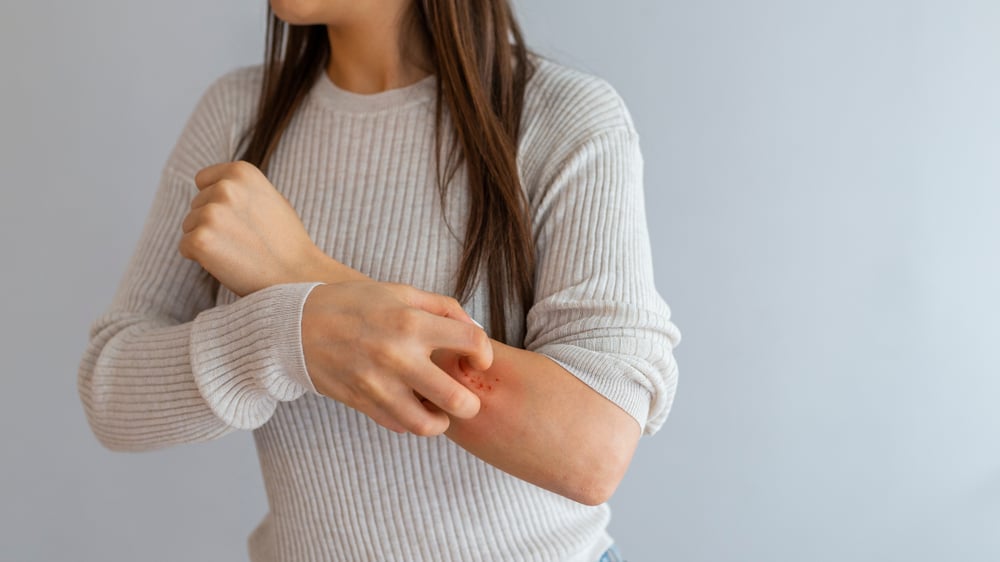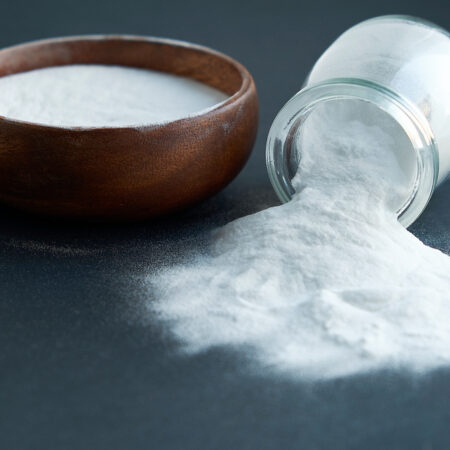Baking soda is one of the most versatile substances in the world. It can be used in everything from cooking and cleaning to skincare and cleansing. But did you know that this natural compound can also be used to alleviate certain skin conditions and ailments?
Taking a baking soda bath can help treat skin conditions like eczema, psoriasis, and skin fungus. It can also help to balance the body’s pH levels and relieve tension and muscle pain. Knowing this, many people choose to add baking soda to their bathwater as an affordable and natural remedy.
Continue reading for more information on baking soda baths and what they can offer you.
How to Draw a Baking Soda Bath
There are many benefits to taking baking soda baths, as we’ll explore later in this article. But first, here’s how to draw the perfect bath.
Since everyone’s body is different, it’s always best to consult your doctor before trying a new treatment. Once you have the go-ahead, complete the following steps to whip up your very own baking soda bath.

Fill Your Tub
It’s best to avoid bathing in hot water when taking baking soda baths, especially if you suffer from dry skin or are prone to fainting. Instead, fill your tub up with warm or lukewarm water to help your skin retain its moisture.
Add Baking Soda
Add 1 cup of baking soda to smaller tubs and 2 cups of baking soda to larger tubs. Use either a spoon or your hand to swish the water around until the baking soda has fully dissolved.
To create a serene atmosphere, you may also choose to light some candles, play relaxing music, and add a few drops of essential oils or some Epsom salts to your bathwater. Lavender essential oil is a popular pick amongst bath-lovers due to its supreme stress-relieving properties.
Soak
Step into your bathtub once the water has cooled to a comfortable temperature and the baking soda has fully dissolved. You can soak in the tub for up to 40 minutes. At a minimum, it’s best to remain in the bath for at least 10 minutes to allow the baking soda to penetrate your skin.
During this time, you can use a washcloth, loofah, or exfoliating glove to remove dead skin cells from your body.
Rinse Off
To cleanse your skin of toxins, residue, and dead skin cells, it’s best to rinse your body off in the shower after you bathe in a baking soda bath.
Once out of the shower, pat your body dry using a clean towel. If you are prone to dry or sensitive skin, you may also choose to apply a natural or organic lotion to your body.
What Are the Benefits of Taking Baking Soda Baths?
Baking soda is an alkaline compound that has antifungal, antibacterial, and anti-inflammatory properties. So unless you are allergic to sodium bicarbonate or are someone who shouldn’t take baking soda baths, there’s a good chance that you will greatly benefit from incorporating them into your weekly routine.

Below are some of the most revered benefits tied to baking soda baths.
Improves Circulation
Baking soda baths can help improve the circulation of lymphatic fluids, particularly in the extremities of the body. Taking weekly baking soda baths can help those suffering from poor muscle contraction and temperature regulation.
Eliminates Odor
If you struggle with body odor, you may benefit from taking baking soda baths, as they have been proven to naturally eliminate foul smells.
Baking soda is so effective in fighting odors that it can be added to litter boxes and laundry machines to keep them smelling fresh and clean. You can also keep a box of baking soda in your fridge to help neutralize powerful scents.
Detoxifies the Body
Baking soda can cleanse and detoxify the skin, boosting the body’s immunity response in the process. It also helps regulate unbalanced acid levels, thus cleansing the body of toxins and balancing its pH level.
Promotes Healing
Baking soda has anti-inflammatory properties and has been proven to reduce swelling and redness. As a result, it can also promote healing and reduce the appearance of scars.
Promotes Relaxation
Sodium bicarbonate is a surfactant, and when added to water, surfactants lower surface tension causing water to become silky smooth. Taking a warm and lustrous bath can promote relaxation and help reduce stress levels.
Relieves Tension and Muscle Pain
Just like hot water, baking soda has soothing qualities that help relax tense muscles and relieve tension, reducing pain and inflammation in the process.
If you are suffering from sore or painful muscles, taking a warm bath with baking soda and Epsom salts can promote healing. In fact, Epsom salts are even more effective than baking soda when it comes to relieving tension and soothing muscle pain.
However, adding both of these substances to your tub is optimal, especially if you are an athlete who constantly pushes your body to its limits.
What Conditions Can Baking Soda Baths Alleviate?
You don’t need to have a specific condition to benefit from taking a baking soda bath. However, if you are suffering from one of the following conditions, you’ll find that taking a baking soda bath is both an inexpensive and fast-acting solution.

Chickenpox
Chickenpox is an uncomfortable and temporary skin condition caused by the varicella-zoster virus.
It causes the skin to develop an itchy rash that covers the body with fluid-filled blisters that are so itchy they are practically impossible not to scratch. However, scratching at these blisters can cause scarring and put you at risk of a bacterial skin infection.
Soaking in a baking soda bath can help provide relief from this irritating infection. For best results, fill your tub with lukewarm water, add 1-2 cups of baking soda, and soak your skin for up to 20 minutes. You can take up to 3 baking soda baths a day when dealing with chickenpox.
Constipation & Hemorrhoids
Submerging your bottom in a warm baking soda bath for up to 40 minutes can help soften stool and alleviate the pain associated with constipation and hemorrhoids.
Diaper Rash
It’s common for babies to experience diaper rash or inflamed skin around their bottoms, as wearing diapers can cause chafing. However, anyone who wears diapers can suffer from diaper rash, as diapers cause friction and tend to create damp environments in which germs can prosper.
Baking soda baths can soothe irritated skin while simultaneously cleansing it of germs.
Eczema
Eczema is a skin condition that causes certain areas of the skin to flare up with dry and itchy patches of skin. These inflamed areas are prone to infection, especially if one scratches at them and breaks the skin.
Bathing in a warm baking soda bath, patting your skin dry, and applying moisturizer can help soothe eczema flare-ups. And in some cases, baking soda baths can even help prevent these uncomfortable flare-ups from occurring in the first place.
Poison Ivy & Poison Oak
Those who come in contact with poisonous plants like poison ivy and poison oak are advised to take lukewarm baths. This is because bathing stops the spread of harmful plant oils, preventing stubborn rashes from forming or spreading to other areas of the body.
Baking soda, on the other hand, can help appease inflamed and itchy skin caused by poisonous plants. As such, adding 1-2 cups of baking soda to your bath can help soothe the skin. You can also add some oatmeal to the tub, as oatmeal is effective in fighting inflammation.
Psoriasis
Psoriasis is a skin disease that causes itchy, silvery-white patches to appear on the skin. These patches commonly form on the scalp, elbows, and knees. Psoriasis is an incurable disease that can cause extreme discomfort, especially in widespread cases.
Bathing in a lukewarm baking soda bath, patting the affected skin area dry, and applying moisturizer can help reduce the irritation, itchiness, and appearance of psoriasis.
Skin Fungus
Baking soda baths may also help those suffering from skin fungus, as baking soda has antifungal properties. You can also submerge your hands and feet into a basin of warm baking soda water to help combat fingernail and toenail fungus.
Urinary Tract Infections (UTI)
Urinary tract infections cause extreme discomfort and painful urination. Antibiotics are usually prescribed to those suffering from a UTI, and taking a baking soda bath can help alleviate this condition’s painful symptoms until the antibiotics come into effect.
Baking soda has anti-inflammatory properties and so can also help soothe the urinary tract, making urination less sensitive.
Vulvar Irritation
Baking soda baths can also help women who are dealing with irritated or itchy vulvas. For extreme cases, it’s recommended to bathe in a lukewarm baking soda bath for 15 minutes up to 3 times a day.
Yeast Infections
Candidiasis is a fungal infection that causes an excess of yeast to arise in the body. Women commonly experience yeast infections, which can cause severe itchiness, swelling, and burning around the vulva or in the vagina.
Taking a baking soda bath can help appease the symptoms of yeast infections, as baking soda has antifungal properties and can soothe itchy and inflamed body parts. Baking soda is also suspected of regulating vaginal pH levels.
Who Shouldn’t Take Baking Soda Baths?

Baking soda baths tend to be helpful and aren’t usually harmful, but this isn’t the case for everyone. It’s best to avoid taking baking soda baths if you fall under one of the following categories.
- You have diabetes.
- You are pregnant or nursing.
- You have high blood pressure.
- You are taking prescription medication.
- You are under the influence of drugs or alcohol.
- You are prone to fainting.
- You have an open wound.
- You have a serious infection.
Frequently Asked Questions (FAQs)
We answered a few of the most frequently asked questions surrounding baking soda baths below.
Can Babies and Children Take Baking Soda Baths?
In most cases, it is perfectly safe for babies to take baking soda baths. However, due to their small physiques, it’s recommended that babies and small children bathe in lukewarm water that has been infused with no more than 1-2 tablespoons of baking soda for up to 10 minutes.
To ensure that your little one will benefit from taking a baby soda bath, consult your pediatrician.
What Type of Baking Soda Should I Use?
Arm & Hammer is one of the most affordable and trusted brands of baking soda on the market. You can use this type of baking soda in the kitchen and the bath.
However, if you would rather purchase an organic baking soda, PURE is a beloved natural brand that offers eco-friendly packaging and is known for being aluminum-free.
In the end, however, there is no right or wrong baking soda to choose from — just make sure the only ingredient is sodium bicarbonate!
Last Thoughts
Everyone’s body is different, which is why it is so important to consult your doctor before starting a new treatment. Although baking soda baths are often harmless and bring about positive effects, it never hurts to speak to a professional, especially if you have a serious skin condition or ailment.
If you have never used baking soda before, we recommend doing a skin patch test before taking the plunge. And be sure to contact your doctor if your condition gets worse or fails to improve after a few days.
